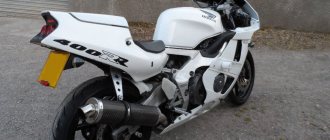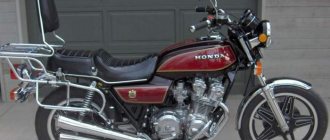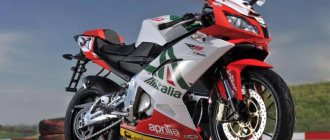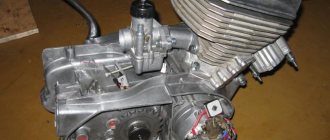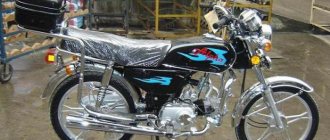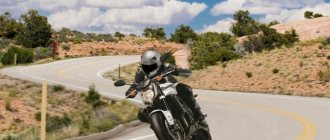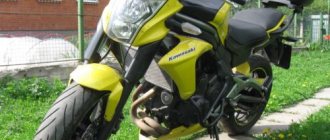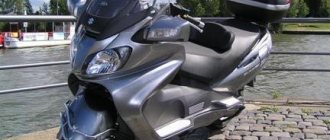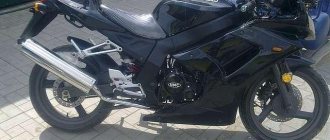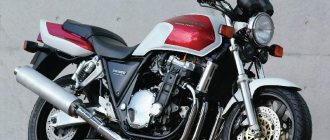history of the company
The history of Harley Davidson deserves special attention. It is one of the most successful firms that has ever existed. The company began in 1903. It was in this year that Davidson and Harley released their first bike. They soon founded a small company and began producing about 50 motorcycles a year. Over time, they began to introduce innovative developments into their products: V-Twin engine, manual transmission. Even in the earliest times, Harley-Davidson products had their famous, highly visible shape.
The company withstood difficult crises for the American economy, produced more than 80 thousand units of equipment for the US military needs during the Second World War and remained afloat. Currently, Harley Davidson produces about 200,000 motorcycles per year. It is also noteworthy that the community of motorcyclists under the auspices of the company is the largest in the world.
Harley Davidson Sportster 1200
Motorcycles of this model are the most common. Buyers are attracted to them not only by their appearance, but also by their relatively affordable price. The Sportster is the lightest model in terms of weight and handling. Its frame is narrower and more compact than that of classic models, and provides better maneuverability on the roads.
The first Sportster motorcycle appeared in 1957 in order to satisfy the interests of those who wanted to purchase a sports bike. The developers tried to achieve ideal characteristics, and they succeeded. The new frame, equipped with engine balancing shafts, is more rigid and durable, and the 2-piston brakes have also been improved. The cooling system has also been improved. Increasing the engine speed gave it additional power. The ignition system has also undergone modernization. At the same time, Harley has not changed its classic brutal style at all. The ease of handling makes the Harley Davidson Sportster 1200 ideal for urban riding.
motorcycle strangers
The Model K can be considered the ancestor of the Sporster. It was on the basis of this motorcycle that the new Sporty was built. The year of birth of the Sporty is considered to be 1957. It was presented as “A new motorcycle with a modern power plant.” 55″ overhead valve V-twin engine with a compression ratio of 7.5:1, 4 camshafts. The cylinder diameter and piston stroke are 3.0″ and 3.81″. The model was called XL, probably because the letter X had not yet been used for civilian motorcycles. And the engine was nicknamed Ironhead - the cylinder heads were cast iron. The first sports cost $1,103 and 1,983 were sold in 1957.
In 1958, the XLH model was introduced. The letter H indicated the second step after the base model, although some believe that this means “High compression”. The engine was distinguished by a higher compression ratio, larger valves, the camshaft gears became integral with the camshafts, the carburetor choke was moved to the other side, the generator received 2 brushes.
1959 brought XLH dual exhaust, new headlight, odometer, nylon chain tensioner. He covered 1/4 mile in 14.5 seconds at ~90 mph.
In 1960, new shock absorbers appeared.
In 1963, the XLH and XLCH models received new 3rd gear ratios of 1.323:1, previously 1.381. The XLCH received shorty duals mufflers, key ignition and an upgraded magneto/coil. The quarter mile flew by in 14.3 seconds.
1964 - minor changes in appearance: new coloring of the tank, chrome panel on the fork.
1965: XLH and XLCH became 12-volt, XLH received automatic ignition advance, better horn, new shock absorbers and 3.7 gallon tank.
1966: The camshafts were changed, racing developments gave rise to intake ports and jumbo valves. The engine was already producing 60 l/s. The carburetor was changed to Tillotson, it received heat protection.
1967. An electric starter and new shock absorbers appeared.
1968. New fork, kickstarter removed from XLH, new primary gear cover fork, an additional option appeared - a pistachio tank.
1969. For the first time, an exhaust with an adapter was used, adding 5 l/s. Now the engine produced 58 horses. New cast cylinder heads.
1970. New model XR-750, sporty racing version. The ignition was changed on the XLCH.
1971. Single spring wet clutch
1972. New 61″ or 1000cc engine, 61 HP, 9:1 compression ratio, top speed 110+ mph, 1/4 mile in 13.38 sec at 97.7 mph. The carburetor is now Bendix/Zenith, new oil pump, oil tank moved closer to the chain. The seat is thinner and with less padding.
1973. The first AMF Harleys rolled off the production line. There are mandatory turn signals, a new Kayaba 35mm fork, and front disc brakes.
1974. Gas return spring appeared
1975. Showa 35mm fork.
1977: The new frame is designed so that the oil pump can be removed without removing the engine from the frame. A modification of the XLT has appeared - XL Touring. 3.5 gallon tank, touring handlebar, FLH panniers, windshield. At the Daytona rally, the XLCR was introduced with cast aluminum wheels, a single seat, a fiberglass tail, and a black engine with a 68 hp, 9:1 compression ratio that accelerated the bike to 110 mph. The exhaust was also black, there was a small windshield, a low steering wheel, and there were 2 brake discs at the front. 4 gallon fuel tank.
1978. Optional alloy wheels, 2 front brake discs, electronic ignition, battery and oil tank were hidden deeper “inside” the motorcycle. The anniversary XLH, dedicated to the 75th anniversary of the company, had a different color scheme.
1979: All models received XLCR frame and exhaust, XLT discontinued. The kickstarter was removed, but disc brakes appeared both front and rear. This is the last year of XLCH production, but the XLS model is introduced: an extended fork, 16″ front wheel, drag bar on 3.5″ racks, a backrest with a leather “cushion”, a saddle made of 2 halves, highway pegs.
1980. 16″ wheel replaced 18″
1981. HD was bought back from AMF. Optionally, spoked or cast wheels appeared, the rear wheel was 16″ or 18″. XLS: horned steering wheel, 3.3 gallon tank, optional 2.2. The XLH has a stiffer fork and an optional 3.3-gallon tank.
1982. Lighter frame, relocated oil tank, thicker cylinder head gaskets, lower compression ratio - 8:1. The rear disc has been enlarged. The battery has been relocated on the XLS.
1983 XLH: High handlebar, 3.3 gallon tank optional, new saddle, less restrictive exhaust. New model XLX-61: single saddle, pistachio tank, only speedometer, 9-spoke wheels, 156 W generator, two 10″ brake discs at the front. Also introduced is the XR-1000 model, based on the XLX chassis: aluminum cylinder heads with intake ports on the right and exhaust ports on the left. The cylinders were shortened by half an inch. V-fire III ignition, two Dell'Orto 36mm carburetors. Wheels are 9-spoke. The engine produced 71 HP at 5600 rpm, the motorcycle accelerated to 125 mph. 2.5 gallon gas tank, 2.5 quart oil tank.
1984: The alternator was replaced, the XLH got the pistachio tank again, the XR got better brakes and an orange and black “racing” livery. XLH/X/S - one larger brake disc at the front.
1985: Production is cut due to anticipation of the Evo-XL.
1986. First year of production of the Evo-XL in 2 versions 883cc and 1100cc. The frame is from XLX, the cylinders and cylinder heads are aluminum, there are hydraulic valve lash compensators, a Keihin 34mm carburetor, cast aluminum wheels, a single saddle, height 30″, low steering wheel, duplicated turn signals.
1987. 30th anniversary of Sporty production. First year of Evo Hugger production - 2″ shorter fork, softer 26.75″ saddle (1.75″ lower than stock)
1988. New 39mm fork, instead of the old 35mm. Keihin CV40 carburetor. first year of production of the 1200cc engine.
1989. An unprecedented price increase for 883 from $3995 to $3999

